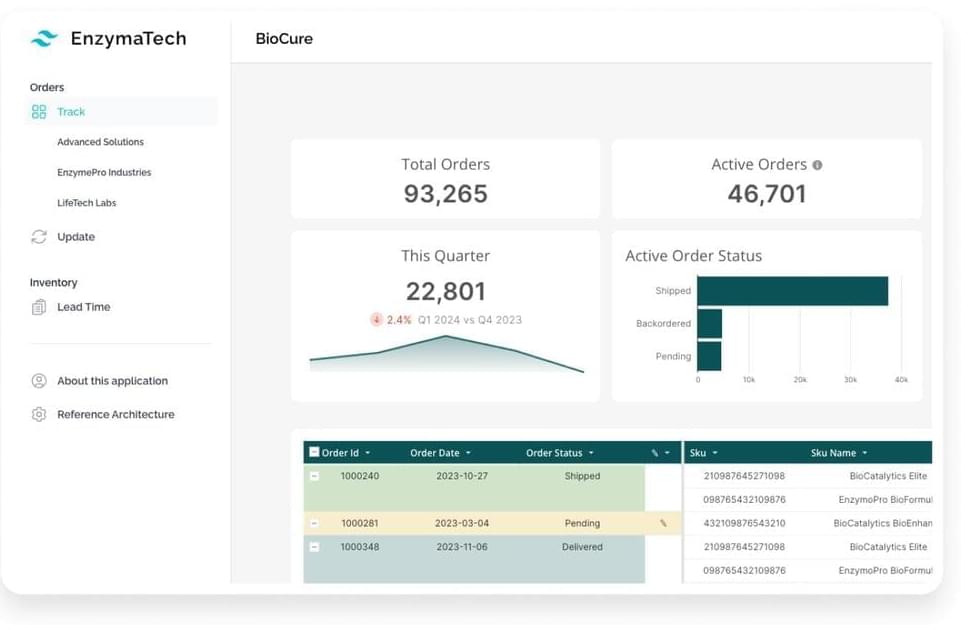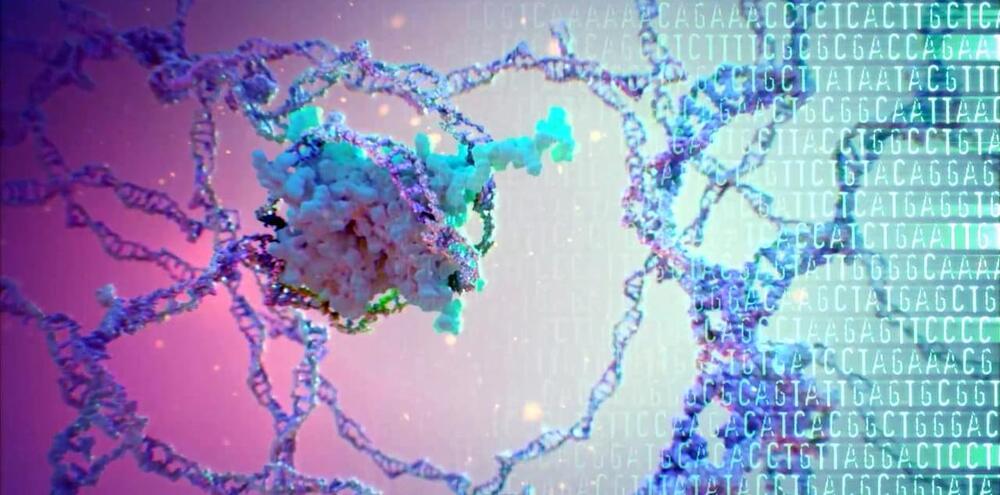Latest posts
May 11, 2024
CRISPR in Neuroscience: How Precision Gene Editing May Unravel How the Brain Works (and Why it Sometimes Doesn’t)
Posted by Dan Breeden in categories: bioengineering, biotech/medical, genetics, neuroscience
The brain is one of the most complex entities in biology. For thousands of years, humans have wondered how the human brain works, but only in the past few years has technology evolved so that scientists can actually answer some of the many questions we have. What are the causes of brain disorders? How do our brains develop? How does the brain heal after a head injury? While we still have a long way to go before we can understand the many facets of the human brain, one technology – CRISPR – has allowed us to start answering these questions on a genetic level.
What is CRISPR?
May 11, 2024
Are You Ready for Tech That Connects to Your Brain?
Posted by Dan Breeden in categories: business, cybercrime/malcode, education, neuroscience
Imagine having telepathic conversations with loved ones, instantaneously accessing superhuman computational power, playing back memories and dreams, or immersing yourself and every sense you possess into a virtual entertainment experience. In the distant future, if brain-computer interfaces (BCIs) are successful at reading and writing information to the brain, and if humans adapt to the technology, we could experience some pretty amazing scenarios. But, there are many outstanding questions for how we could ensure a bright future: Who will own the data generated by our brains? Will brain data be bought and sold by data brokers like other personal information today? Will people be forced to use certain BCIs that surveil their brain activity (for example, to make sure you’re paying attention at work and school)? Will BCIs put peoples’ brains at risk of being hacked? As with all new technology, more of these philosophical questions will need to be investigated and answered before there is widespread adoption and use of BCIs in the future.
Page-utils class= article-utils—vertical hide-for-print data-js-target= page-utils data-id= tag: blogs.harvardbusiness.org, 2007/03/31:999.274997 data-title= Are You Ready for Tech That Connects to Your Brain? data-url=/2020/09/are-you-ready-for-tech-that-connects-to-your-brain data-topic= Technology and analytics data-authors= Lauren Golembiewski data-content-type= Digital Article data-content-image=/resources/images/article_assets/2020/09/Sep20_28_3191098-383x215.jpg data-summary=
Who owns that data?
May 11, 2024
CRISPR-Cas9: A double-edged sword
Posted by Dan Breeden in categories: biotech/medical, genetics
What if someone handed you a tool and said that you could better the lives of people before their birth by changing their genes? Would you do it?
CRISPR-Cas9 is one such tool. It’s an efficient and effective gene-editing technology that works by tagging a section of DNA with an RNA segment, and then using a protein called Cas9 to cut the DNA at the specified point. Then, the cell’s own DNA machinery works to add or delete DNA.
This technology opens up the pathway to a variety of gene-editing applications, from eliminating HIV in living organisms to creating a potential cure for Huntington’s disease. There is especially high potential for single-gene disorders to be eradicated. For example, promising results from the successful removal of a gene known to cause fatal heart disease from the embryo will not only save lives but also prevent the passing down of the gene.
May 11, 2024
Combination of Genetics and Nanotechnology for Down Syndrome Modification: A Potential Hypothesis and Review of the Literature
Posted by Dan Breeden in categories: bioengineering, biotech/medical, genetics, nanotechnology, neuroscience
Down syndrome (DS) is one of the most prevalent genetic disorders in humans. The use of new approaches in genetic engineering and nanotechnology methods in combination with natural cellular phenomenon can modify the disease in affected people. We consider two CRISPR/Cas9 systems to cut a specific region from short arm of the chromosome 21 (Chr21) and replace it with a novel designed DNA construct, containing the essential genes in chromatin remodeling for inactivating of an extra Chr21. This requires mimicking of the natural cellular pattern for inactivation of the extra X chromosome in females. By means of controlled dosage of an appropriate Nano-carrier (a surface engineered Poly D, L-lactide-co-glycolide (PLGA) for integrating the relevant construct in Trisomy21 brain cell culture media and then in DS mouse model, we would be able to evaluate the modification and the reduction of the active extra Chr21 and in turn reduce substantial adverse effects of the disease, like intellectual disabilities. The hypothesis and study seek new insights in Down syndrome modification.
Keywords: Down syndrome, CRISPR/Cas9, Designed DNA construct, Poly D L-lactide-co-glycolide (PLGA), Nano-carrier, Chromosome 21 inactivation.
May 11, 2024
Embedded Analytics Made Easy: Go From Concept to Launch in No Time
Posted by Dan Breeden in categories: innovation, security

Looking to embed analytics in your products but daunted by the complexity and resource demands?Join us to discover how you can rapidly (in days/weeks) deliver value with modern analytics, boosting innovation and increasing revenue through data-driven solutions. Data Experts at Aimpoint Digital and Sigma will explain what modern embedded analytics means and how it:- Empowers developers to swiftly create visualizations and data apps on a composable platform.- Wins customers with extensive data exploration, database writeback, and robust security for multi-tenancy. Register today to leverage data for growth and operational excellence. Act now before losing your competitive edge.
May 11, 2024
The big idea that our Universe is a hologram
Posted by Dan Breeden in category: holograms
Holograms preserve all of an object’s 3D information, but on a 2D surface. Could the holographic Universe idea lead us to higher dimensions?
May 11, 2024
Deep Learning Illustrated, Part 3: Convolutional Neural Networks
Posted by Dan Breeden in category: robotics/AI
May 11, 2024
SpaceX set to rock Florida with bigger Starship launches
Posted by Dan Breeden in categories: Elon Musk, space
SpaceX’s Starship is coming to the Kennedy Space Center in Florida – and its plan to use the launch facility means the Federal Aviation Administration will probe the potential environmental impact of Elon Musk’s most powerful rockets blasting off the US East Coast.
NASA’s Environmental Assessment (EA) for the whole affair was completed in September 2019. The potential environmental impact of constructing and operating the site for Starship Super Heavy vehicles was considered, and a Finding Of No Significant Impact (FONSI) was made.
However, that was for approximately 24 Starship Super Heavy launches per year. According to the FAA, SpaceX’s latest proposal would involve constructing the necessary infrastructure to support up to 44 launches per year.
May 11, 2024
Oral Rinse Might Alert Doctors to Stomach Cancers
Posted by Paul Battista in category: biotech/medical
FRIDAY, May 10, 2024 (HealthDay News) — A quick swish at the doctor’s office could someday provide early detection of stomach cancer, the fourth-leading cause of cancer deaths worldwide, a new study reports.
Researcher found distinct differences in bacteria samples taken from the mouths of people with stomach cancer or pre-cancerous stomach conditions, compared with samples from healthy patients.
A simple oral rinse could pick up those bacteria as part of a quick and easy cancer screening, researchers will argue May 20 during a presentation at the Digestive Disease Week meeting in Washington, D.C.

















